Panduan ke Desa-Desa Paling Menawan di Provence
Panduan untuk membantu Anda memutuskan desa Provence mana yang akan dikunjungi
Ringkasan
Provence, sebuah wilayah di tenggara Prancis, terkenal akan keindahan alamnya yang memukau, warisan budaya yang kaya, dan desa-desa yang menawan. Wilayah ini merupakan rumah bagi beberapa desa paling indah di Prancis, masing-masing dengan karakter, sejarah, dan daya tariknya sendiri yang unik. Bagi wisatawan yang mencari pengalaman Provencal yang autentik, perjalanan melalui desa-desa paling menawan di wilayah ini adalah suatu keharusan.
Dengan lebih dari 800 kota dan desa di wilayah ini, mungkin sulit untuk memutuskan desa mana yang akan dikunjungi mengingat waktu yang terbatas. Kami telah menyusun daftar 7 desa paling menawan untuk membantu Anda merencanakan perjalanan ke wilayah ini.
- Untuk galeri seni: Gordes
- Untuk tebing merah dan oker: Roussillon
- Untuk kanal dan jembatan: L'Isle-sur-la-Sorgue
- Untuk suasana paling semarak: Lourmarin
- Untuk reruntuhan dan sejarah: Les Baux-de-Provence
- Bagi banyak orang Vincent Van Gogh: Saint-Remy-de-Provence
- Untuk Ladang Lavender: Valensole
Gordes
Desa Gordes adalah desa di puncak bukit yang merupakan salah satu desa yang paling banyak difoto di Provence. Desa ini terkenal dengan jalan-jalan sempit berbatu, rumah-rumah batu kuno, dan pemandangan pedesaan di sekitarnya yang indah. Pengunjung dapat menjelajahi kastil abad pertengahan, galeri seni, dan pasar lokal di desa tersebut, serta menikmati masakan tradisional Provencal di salah satu dari banyak restorannya.
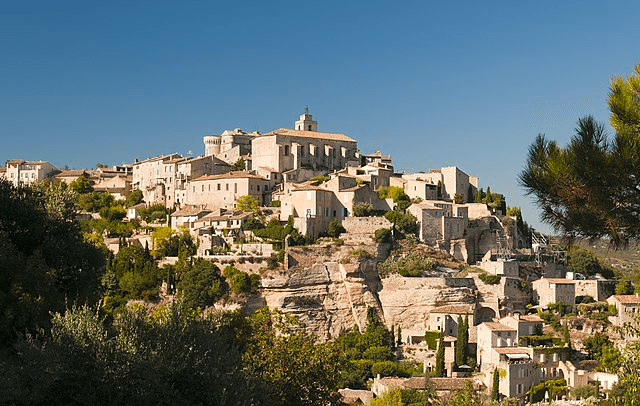
Luangkan waktu untuk berjalan-jalan di jalanan berbatu yang berkelok-kelok di kota tua, dan jelajahi banyak galeri seni yang berjejer di sepanjang jalan. Tempat yang wajib dikunjungi adalahKastil Gordes, sebuah monumen bersejarah di jantung desa yang berasal dari abad ke-11. Saat ini, tempat ini merupakan pusat budaya yang didedikasikan untuk menyelenggarakan pameran oleh seniman lokal. Tempat lain yang wajib dikunjungi adalahGereja Saint-Firminterletak di ujung jalan dari Kastil Gordes, Anda akan terkagum oleh panel kayu yang luar biasa dan mural berwarna-warni.
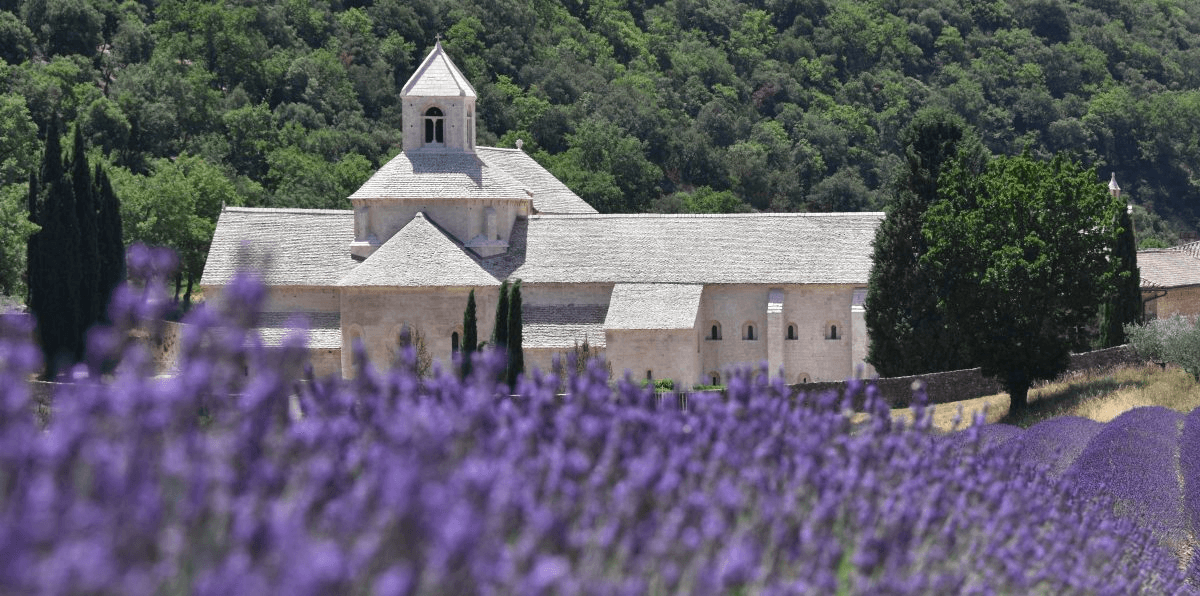
Untuk beberapa pemandangan terbaik di Gordes, pastikan untuk mengunjungiSudut Pandang Gordesdi mana Anda bisa mendapatkan pemandangan yang menghadap ke rumah-rumah dan Taman Regional Luberon di bawahnya. Tempat ini juga merupakan tempat yang bagus untuk melihat matahari terbenam, meskipun terkadang bisa agak ramai. Di musim panas, pastikan juga untuk mengunjungiBiara Senanqueuntuk menikmati pemandangan ajaib hamparan ladang lavender yang sedang mekar.

Jika Anda mengunjungi Gordes, Anda juga harus mengambil kesempatan untuk mengunjungi tempat terdekatDesa des Bories, di mana Anda akan melihat kumpulan gubuk yang dibangun dengan menumpuk batu-batu kering.
💡 Gordes memiliki pasar mingguan pada Selasa pagi (hingga pukul 1 siang) dan pasar produsen pada Kamis malam dari bulan Juni hingga September. Jika Anda ingin merasakan pasar Gordes, Anda mungkin ingin merencanakan untuk mengunjungi desa tersebut pada hari Selasa.
🚗**Menuju Gordes:**Cara termudah untuk mencapai Gordes adalah dengan berkendara, meskipun parkir bisa menjadi masalah. Atau, naik kereta api keStasiun Cavaillondi mana terdapat bus umum (perjalanan sekitar 30 menit) ke Gordes.
🚶♀️**Bepergian di Gordes:**Kastil Gordes, Gereja Saint-Firmin, dan Gordes ViewPoint dapat ditempuh dengan berjalan kaki. Jika Anda berencana mengunjungi Desa Bories dan Biara Senanque, Anda tetap dapat mengunjunginya meskipun tidak memiliki mobil — meskipun perlu diingat bahwa perjalanan sekali jalan dapat memakan waktu hingga 45 menit.
⏰**Berapa banyak waktu yang dihabiskan di Gordes:**Anda dapat dengan mudah mengunjungi tempat-tempat wisata utama di Gordes dalam perjalanan sehari. Namun, jika Anda bepergian tanpa mobil, Anda mungkin ingin mempertimbangkan untuk menginap semalam mengingat waktu tempuh yang diperlukan.
Roussillon
Roussillon adalah desa cantik di puncak bukit yang terletak di wilayah Luberon, Provence, di tenggara Prancis. Desa ini terkenal dengan tebing merah dan okernya yang memukau serta jalan-jalannya yang berliku-liku dengan rumah-rumah berwarna-warni dan toko-toko kerajinan.

Roussillon terkenal dengan tambang okernya, yang telah menjadi sumber utama pigmen mineral yang digunakan dalam seni dan industri selama berabad-abad. Salah satu objek wisata yang wajib dikunjungi di Roussillon adalahSentier des Ocres, atau Ochre Trail, yang mengajak pengunjung berjalan-jalan di sepanjang tebing dan tambang oker di desa tersebut. Jalur ini ditandai dengan baik dan menawarkan pemandangan tebing merah dan jingga yang luar biasa, serta kebun anggur dan kebun zaitun di sekitarnya. Ada dua jalur yang dapat dipilih - jalur 30 menit atau 60 menit, keduanya cukup mudah dan cocok untuk semua usia.
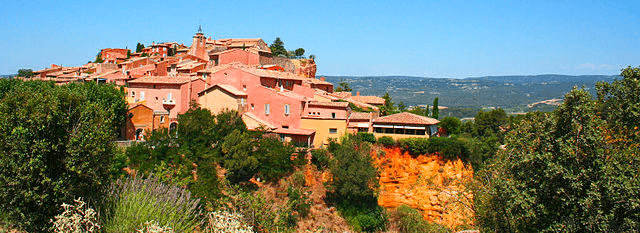
Anda juga dapat mempelajari lebih lanjut tentang sejarah industri oker diEkomusee de l'ocre (museum mata air)Luangkan waktu untuk berjalan-jalan santai di sekitar pusat kota (Tempat Walikota) dan amati kombinasi berbagai corak dan warna pasir oker pada dinding dan bangunan tua. Atau kunjungipuncak desauntuk melihat gambaran wilayah Luberon secara menyeluruh.
Selain keindahan alamnya, Roussillon juga merupakan rumah bagi sejumlah toko kerajinan, butik, dan galeri seni yang menawan, tempat para pengunjung dapat melihat-lihat dan membeli kerajinan dan suvenir buatan lokal. Beberapa objek wisata di Roussillon antara lainGaleri Seni Tapiezo KontemporerDan Gereja Saint Michel.
💡 Desa Roussillon terletak hanya 15 menit berkendara (atau 20 menit naik bus) dari Gordes. Jika Anda berencana untuk bermalam di Gordes, Anda dapat mempertimbangkan untuk menuju Roussillon pada hari kedua.
🚗**Menuju Roussillon:**Cara termudah untuk sampai ke Roussillon adalah dengan berkendara. Jika Anda tidak berkendara, Anda dapat naik kereta api keStasiun Cavaillondi mana terdapat bus umum (perjalanan sekitar 1 jam) ke Roussillon.
🚶♀️**Bepergian di Roussillon:**Semua tempat wisata utama di Roussillon dapat dicapai dengan berjalan kaki satu sama lain.
⏰**Berapa banyak waktu yang dihabiskan di Roussillon:**Anda dapat dengan mudah mengunjungi tempat-tempat wisata utama di Roussillon dalam perjalanan setengah hari. Mungkin pertimbangkan untuk menggabungkan kunjungan ke Roussillon dengan kunjungan ke desa terdekat, Gordes.
Pulau-sur-la-Sorgue
Perjalanan melintasi desa-desa paling menawan di Provence tidak akan lengkap tanpa mengunjungi L'Isle-sur-la-Sorgue, sebuah desa indah yang dikenal sebagai "Venesia dari Provence" karena banyaknya kanal dan jembatan.
Salah satu atraksi utama di L'Isle-sur-la-Sorgue adalahPasar luar ruangan hari Mingguyang menjual berbagai macam produk mulai dari buah-buahan, keju, dan barang antik. Ada juga berbagai macam pop-uppasar barang antiktersebar di seluruh desa. Pengunjung dapat menjelajahi berbagai barang antik dan barang-barang kuno, termasuk furnitur, karya seni, tekstil, dan perhiasan, serta menikmati suasana unik pasar yang ramai ini.
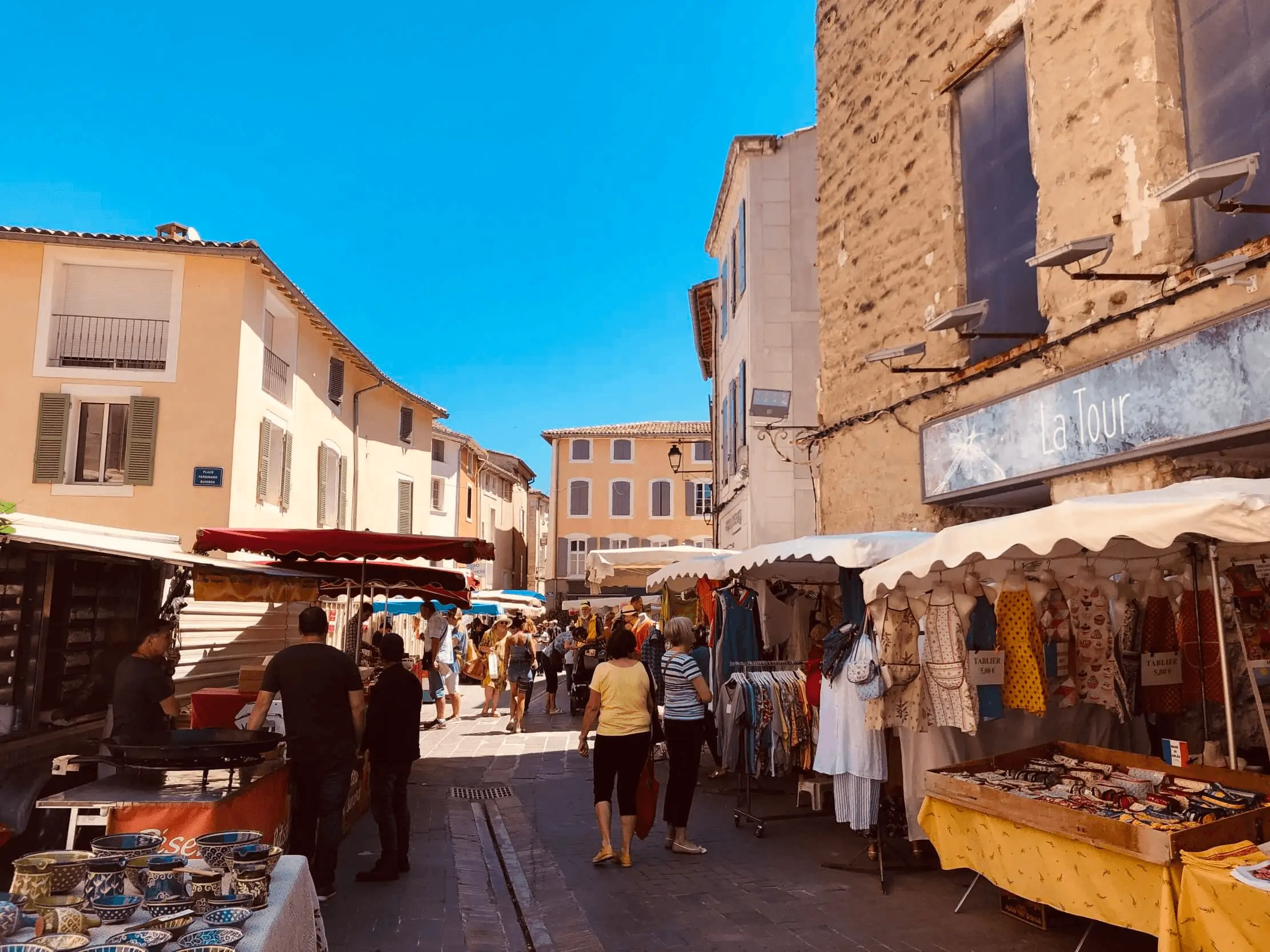
Selain pasar barang antiknya, L'Isle-sur-la-Sorgue juga merupakan rumah bagi sejumlah galeri seni dan berbagai museum, mulai dari museum tekstil, museum mainan antik, hingga museum yang didedikasikan untuk seni kontemporer. Salah satu hal terbaik yang dapat dilakukan di L'Isle-sur-la-Sorgue adalah menjelajahi pusat kota sambil berjalan-jalan santai di sepanjang kanal dan jembatan.
Daya tarik lain dari L'Isle-sur-la-Sorgue adalah kuliner Provencal-nya yang lezat, dengan banyak restoran dan kafe yang menyajikan hidangan tradisional seperti ratatouille, bouillabaisse, dan tapenade. Pengunjung juga dapat mencicipi anggur terkenal di wilayah tersebut dan menikmati makan siang atau makan malam yang santai di salah satu dari banyak teras dan kafe luar ruangan di desa tersebut. Salah satu tempat makan yang paling terkenal adalahKafe Prancis.
🚗**Cara menuju Saint-L'Isle-sur-Sorgue:**Seperti di kebanyakan desa, disarankan untuk berkendara. Namun, Anda juga dapat naik bus atau kereta api dari Avignon atau Arles ke L'Isle-sur-Sorgue.
🚶♀️**Bepergian dalam L'Isle-sur-Sorgue:**Semua tempat wisata utama di L'Isle-sur-Sorgue dapat dicapai dengan berjalan kaki satu sama lain.
⏰**Berapa banyak waktu yang dihabiskan di L'Isle-sur-Sorgue:**L'Isle-sur-Sorgue adalah desa kecil dan Anda akan dapat menjelajahi sebagian besar desa dalam waktu setengah hari.
Burung lourmarin
Lourmarin adalah desa menawan yang terletak di wilayah Luberon di Provence, dan terkenal karena keindahan alamnya, kebun anggur yang subur, suasana budaya yang semarak, dan jalan-jalan yang indah.

Berbeda dengan desa-desa di puncak bukit pada umumnya, desa Lourmarin memiliki kafe dan restoran yang tersebar di sepanjang jalan dengan latar belakang keindahan alam daerah tersebut.Pasar LourmarinHari Jumat juga tidak boleh dilewatkan. Lourmarin terkenal dengan suasana budaya yang semarak, dengan berbagai galeri seni, toko buku, dan teater. Desa ini menyelenggarakan beberapa acara budaya sepanjang tahun, termasuk Festival Musik Musim Panas yang menyelenggarakan serangkaian pertunjukan musik klasik. Jika Anda mencari desa dengan suasana yang semarak dan hidup, Lourmarin adalah pilihannya.

Selain suasananya yang semarak dan santai, Lourmarin juga memiliki sejumlah objek wisata yang patut dikunjungi. Inti dari Lourmarin adalah bangunan abad ke-15Kastil Lourmarin, yang terletak di puncak desa dan menawarkan pemandangan pedesaan di sekitarnya yang menakjubkan. Pengunjung dapat menjelajahi bagian dalam kastil yang terawat baik, termasuk tangga yang mengesankan, kapel, dan perabotan berhias. Lourmarin juga merupakan rumah bagi beberapa bangunan penting lainnya, termasukmakam Albert Camusdan abad ke 18Gereja St.Andrew.
🚗**Menuju Lourmarin:**Cara termudah untuk mencapai Lourmarin adalah dengan berkendara. Dengan transportasi umum, Anda dapat naik bus dari Pertuis, tetapi perlu diingat bahwa Anda harus berganti bus (tidak ada bus langsung)
🚶♀️**Bepergian di Lourmarin:**Semua tempat wisata utama di Lourmarin dapat dicapai dengan berjalan kaki satu sama lain.
⏰**Berapa banyak waktu yang dihabiskan di Lourmarin:**Lourmarin tidak memiliki banyak objek wisata. Namun, kami sarankan Anda meluangkan setidaknya setengah hari untuk menjelajah dan menikmati suasana di pusat desa.
Baux-de-Provence
Les Baux-de-Provence adalah desa abad pertengahan yang terletak di pegunungan Alpilles di Prancis selatan. Desa ini terkenal dengan benteng di puncak bukit yang mengesankan, pemandangan pedesaan di sekitarnya yang menakjubkan, serta jalan-jalan sempit dan gang-gangnya yang menawan.
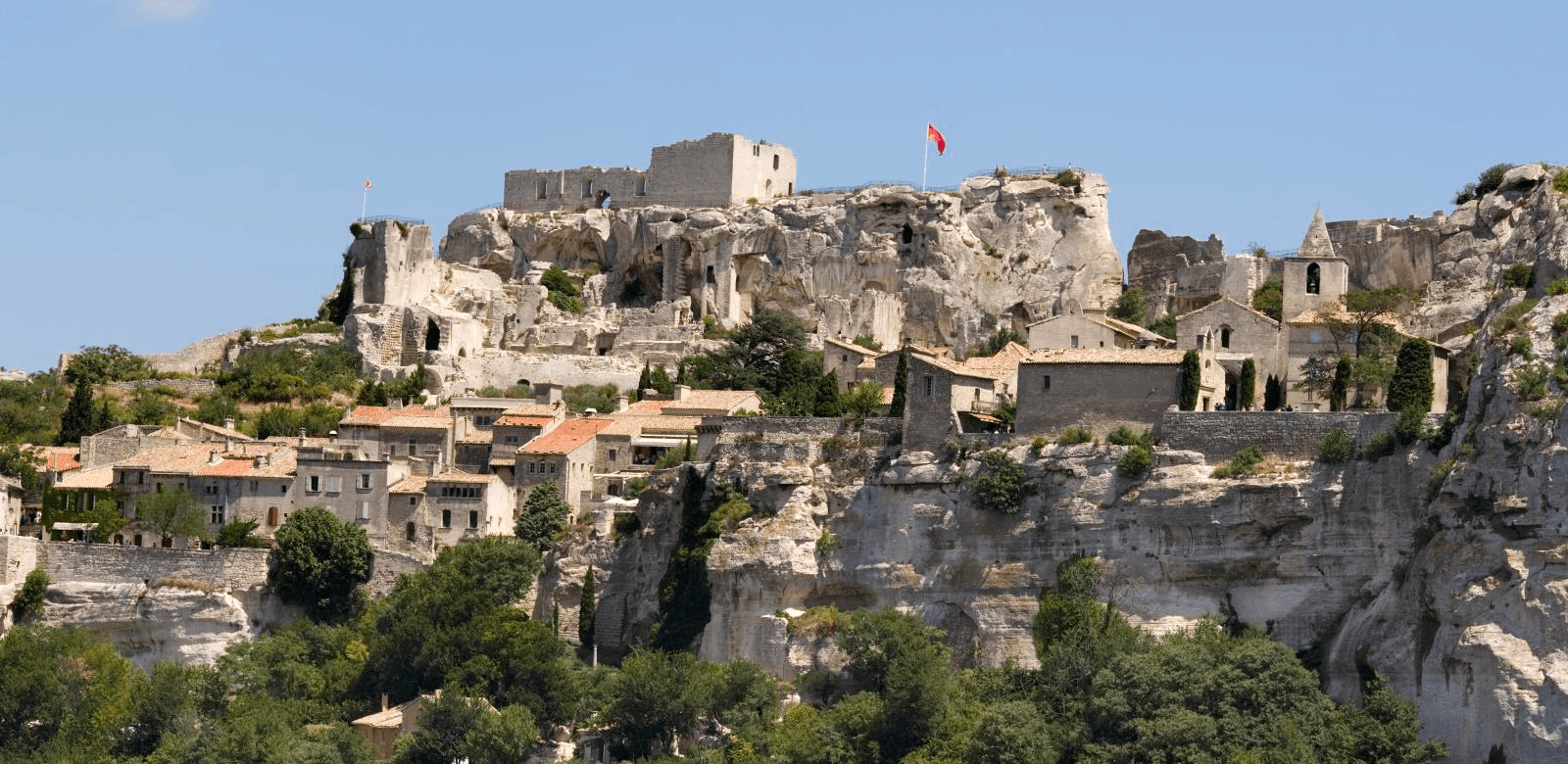
Benteng Les Baux-de-Provence dibangun pada abad ke-10 dan kaya akan warisan budaya. Pengunjung benteng dapat menjelajahi tembok, menara, dan kapel kuno, serta museum senjata dan baju zirah abad pertengahan. Dari puncak benteng, pengunjung dapat menikmati pemandangan pedesaan di sekitarnya, termasuk kebun anggur dan kebun zaitun di wilayah Luberon. Bagi pecinta alam, terdapat berbagai jalur pendakian di sekitar Les Baux-de-Provence yang dapat Anda jelajahi.
Les Baux-de-Provence adalah rumah bagi berbagai landmark bersejarah, termasuk gereja Romawi abad ke-12St.Vincentiusdan reruntuhanKastil BauxPengunjung juga dapat menjelajahi jalan-jalan dan gang-gang desa yang menawan, yang dipenuhi dengan toko-toko kerajinan, galeri, dan kafe.
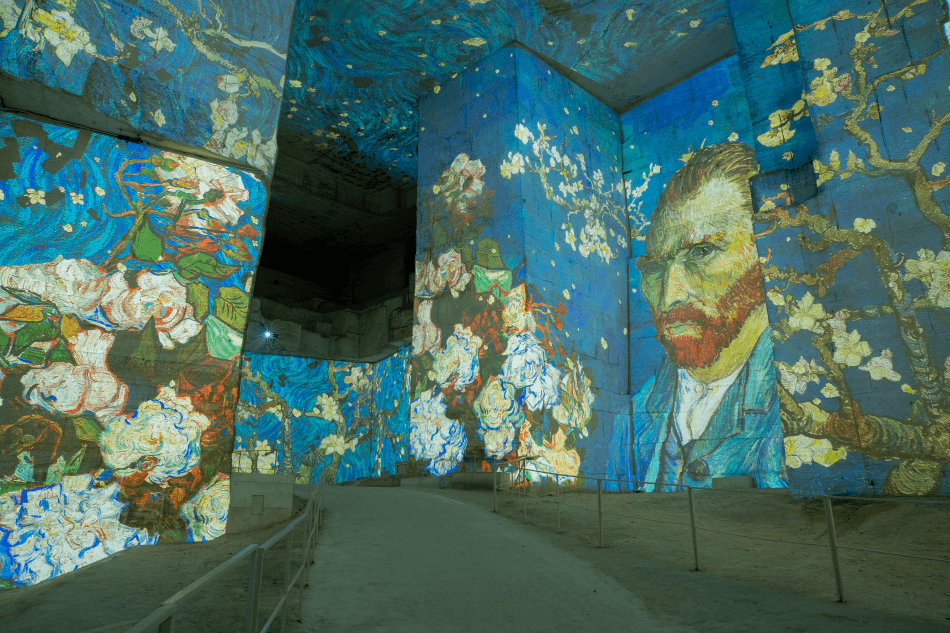
Salah satu atraksi paling unik dan wajib dikunjungi di Les Baux-de-Provence adalahPembawa Cahaya, atau Quarries of Light. Pertunjukan seni multimedia yang memukau ini berlangsung di tambang bawah tanah dan menampilkan proyeksi visual yang memukau dengan alunan musik. Setiap tahun, pertunjukan ini menampilkan tema yang berbeda, dan pertunjukan sebelumnya telah menampilkan karya seniman seperti Van Gogh, Chagall, dan Monet.
🚗**Cara menuju Les Baux-de-Provence:**Cara termudah untuk mencapai Les Baux-De-Provence adalah dengan berkendara. Jika Anda tidak berkendara, Anda dapat naik bus (jalur 57) dari Avignon atau Saint-Remy — perlu diingat bahwa bus hanya melayani Les Baux-de-Provence selama musim panas.
🚶♀️**Bepergian dalam Les Baux-de-Provence:**Semua tempat wisata utama di Roussillon dapat dicapai dengan berjalan kaki satu sama lain.
⏰**Berapa banyak waktu yang dihabiskan di Les Baux-de-Provence:**Anda dapat dengan mudah menjelajahi tempat-tempat wisata utama di Les Baux-de-Provence dalam waktu setengah hari. Sisihkan lebih banyak waktu jika Anda berencana untuk mendaki di salah satu jalur di sekitar wilayah tersebut.
Saint-Remy-de-Provence
Saint-Remy-de-Provence adalah desa yang menawan dan indah, yang terkenal karena hubungannya dengan Vincent van Gogh yang terkenal. Desa ini juga merupakan lokasi beberapa bangunan Romawi yang paling terawat di Provence.
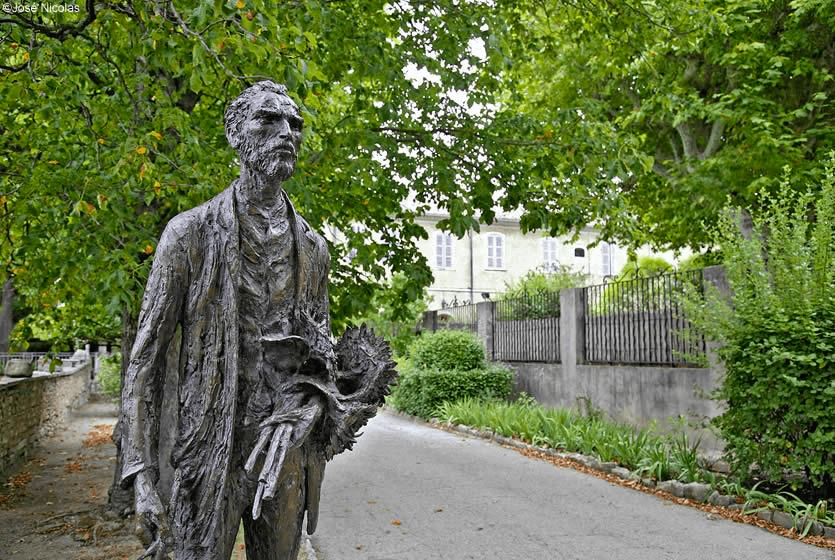
Salah satu atraksi paling terkenal di Saint-Remy-de-Provence adalahBiara Saint-Paul-de-Mausole, tempat Vincent van Gogh tinggal dan bekerja selama tinggal di desa tersebut pada tahun 1889. Pengunjung dapat menjelajahi biara dan melihat kamar tempat Van Gogh tinggal, serta replika studionya dan beberapa lukisannya. Jika Anda penggemar seni kontemporer, Anda juga dapat mengunjungiMuseum Estrine, yang juga memiliki pusat pendidikan yang didedikasikan untuk Vincent van Gogh.
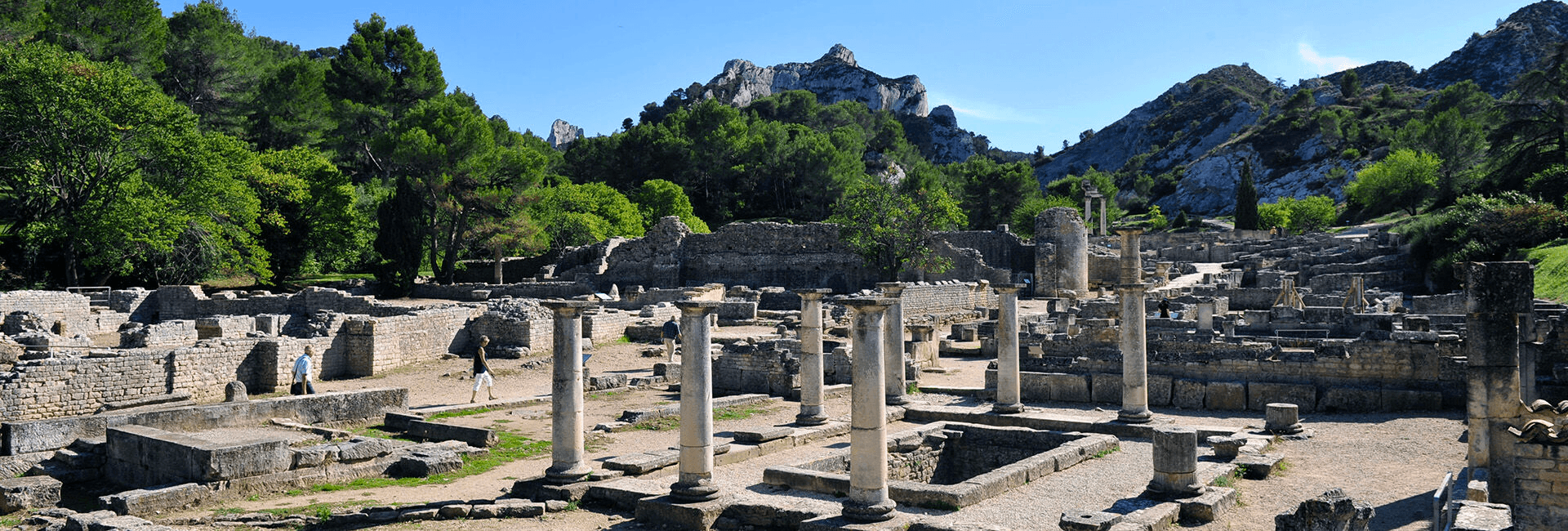
Tepat di luar pintu masuk Saint-Remy-de-Provence, Anda akan dapat melihat dua artefak kota Romawi Glanum yang paling terawat — Lengkungan Kemenangan tertua di Prancis dan Mausoleum Jules, yang secara kolektif dikenal sebagaiBarang Antik. Bepergian sedikit lebih jauh dan Anda akan melihatSitus Arkeologi Glanum, situs luas tempat Anda dapat melihat sisa-sisa kota Romawi kuno.
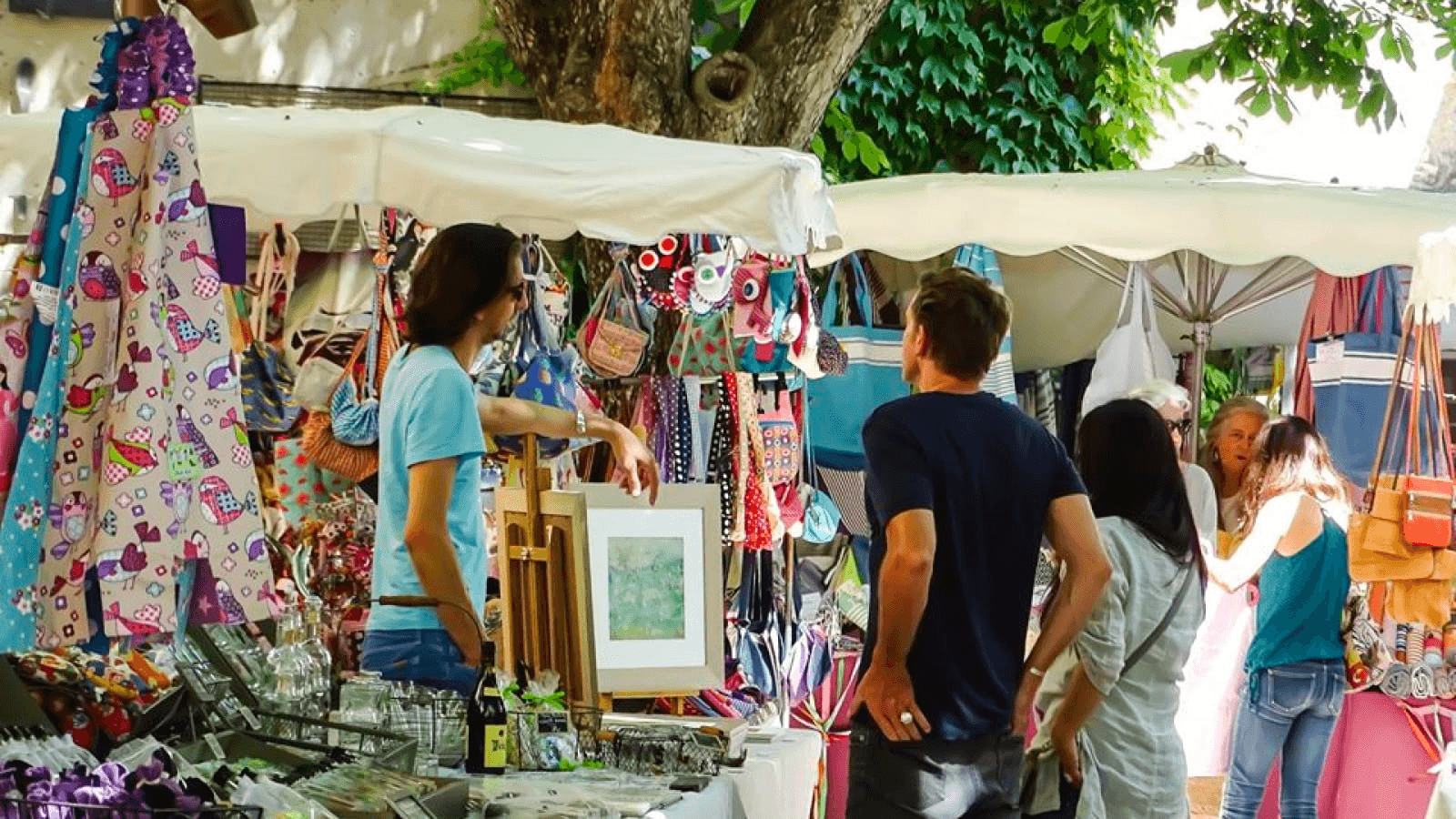
Tempat wisata populer lainnya di Saint-Remy-de-Provence adalahpasar mingguan, yang diadakan setiap hari Rabu di pusat desa. Pasar ini merupakan acara yang semarak dan penuh warna, dengan para pedagang yang menjual hasil bumi segar, kerajinan tangan, dan makanan khas setempat seperti zaitun, keju, dan anggur.
Selain objek wisata budaya dan sejarahnya, Saint-Remy-de-Provence juga dikelilingi oleh keindahan alam yang menakjubkan. Pegunungan Alpilles menjadi latar belakang yang dramatis bagi desa tersebut, dan pengunjung dapat menjelajahi pedesaan di sekitarnya dengan berjalan kaki atau bersepeda, menikmati kebun anggur, kebun zaitun, dan ladang lavender yang menjadi ciri khas wilayah tersebut.
💡 Saint-Remy umumnya dianggap sebagai basis yang baik jika Anda ingin menjelajahi desa-desa di wilayah Alpilles di Provence.
🚗**Menuju Saint-Remy-de-Provence:**Mengemudi adalah cara paling mudah untuk mencapai Saint-Remy. Namun, Anda juga dapat naik bus dari Avignon atau Arles ke Saint-Remy-de-Provence.
🚶♀️**Bepergian di Saint-Remy-de-Provence:**Semua tempat wisata utama di Saint-Remy dapat dicapai dengan berjalan kaki satu sama lain.
⏰**Berapa banyak waktu yang dihabiskan di Saint-Remy-de-Provence:**Disarankan untuk menghabiskan setidaknya satu hari di Saint-Remy-de-Provence.
Valensole
Valensole adalah sebuah desa yang terkenal akan ladang lavender dan kebun zaitunnya yang menakjubkan. Desa ini merupakan salah satu tujuan terbaik untuk melihat bunga lavender selama musim panas.

Daya tarik utama di Valensole adalah keindahannyaladang lavender, yang mekar di bulan-bulan musim panas dan menciptakan lautan ungu yang menakjubkan yang membentang sejauh mata memandang. Faktanya, Valensole dikenal memiliki ladang lavender terbaik di wilayah tersebut. Waktu terbaik untuk mengunjungi ladang lavender adalah selama akhir Juni hingga minggu pertama Juli. Pengunjung dapat berjalan-jalan santai di ladang, atau mengikuti tur berpemandu untuk mempelajari lebih lanjut tentang budidaya dan pemanenan tanaman harum ini.
Daerah kota Valensole tidak memiliki banyak atraksi, tetapi lebih mewakili kota setempat. Ini juga berarti bahwa selama musim bunga lavender, kota ini agak sepi. Namun, jika Anda ingin mengamati dan merasakan kehidupan penduduk setempat, Anda tetap dapat mempertimbangkan untuk pergi ke Valensole di luar musim bunga lavender!
🚗**Menuju Valensole:**Valensole sangat terpencil dan tidak mudah diakses tanpa mobil.
⏰**Berapa banyak waktu yang dihabiskan di Valensole:**Sebagian besar waktu Anda akan dihabiskan di ladang lavender, jadi tergantung berapa banyak waktu yang Anda perlukan untuk menikmati ladang tersebut.